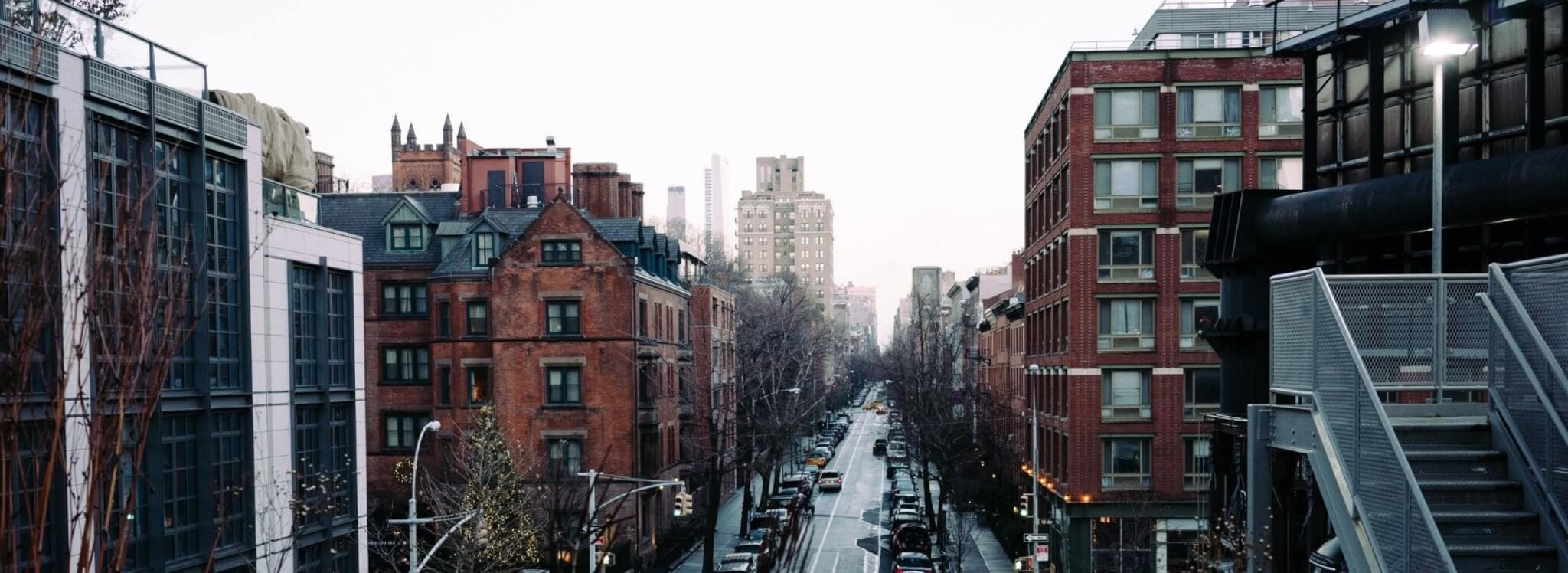Stay or Go: A Tale of Two Housing Markets in New York

The COVID-19 pandemic has affected just about every housing market in the country, but nowhere has the impact been felt as deeply as New York. The cost of living in the New York City area in particular, which has always been expensive and competitive, was turned on its head. Residents mostly hunkered down in their homes to wait out the crisis. The cost of living in New York state is seeing its own dramatic changes as a result of the pandemic.
Escaping New York City
As the country began to open back up in early summer, however, cooped-up city dwellers made their moves. Many fled to less urban areas, buying second homes in upstate New York, or moving out of state completely. In August, there were 38.7% more housing contracts in Brooklyn, a 34% rise in single-family home contracts on Long Island, and a 75.7% increase in single-family home sales in the Hamptons from the same time last year. “They’ve been out of the city with yards and pools since March and they’ve realized these places offer a lot more year round than they thought,” real estate agent Jacqueline Trelease told ABC News.
Meanwhile, the Manhattan market took a pretty big hit; home sales decreased a whopping 50% and condo contracts decreased by 34% year over year. The number of properties for sale also increased 22% since last October, a reflection of the growing urban exodus.
A Suburban Surge
Elsewhere in the state, the market has benefited as a result. In the Hudson Valley, the city of Kingston was already seeing a boom due to its creative culture and influx of urbanites looking to spread out as they grew their families. It now has the most rapidly-rising real estate prices in the country. As local broker Gary DiMauro explained to Fox 5 New York, “I think this was the event that got people off the fence,” referring to the coronavirus. “I think we also got people who were thinking about buying either a first or second home up here to actually pull the trigger.”
Read “3 Questions to Ask Yourself Before Investing in a Vacation Home”
It’s not just areas immediately outside the city, either. For example, Syracuse in central New York has been named as an up-and-coming housing market among mid-sized cities, and nearby Rochester’s median home price has skyrocketed almost 10% since last year to $180,000.
And in western New York, home values in Schuyler County have seen the biggest increase over the past five years.
So despite the downturn in NYC, this increase in activity has led to a net positive: home sales are up 12.2% overall in the state from September 2019 to September 2020.
The median sale price was also up 17.5% to $324,900 from $276,625.
Home Costs in New York
However, like many other areas of the country, demand remains high and inventory is low: as of July 2020, the number of homes on the market had dropped 21.3%. The downside for sellers and current homeowners is that prices have also fallen: 56.5% on the Lower East Side, 36.3% in the Financial District, and 5.3% in Manhattan as a whole. The cost of living in New York is becoming more feasible in the city and less so in the suburbs, but New Yorkers are proving they’re willing to make the change.
If you’re a New York homeowner that’s hoping to use this time to make improvements on your house, buy a second home, or pay down debt, Hometap might be able to help. The best part? You don’t need to sell your home to tap into its value. Instead, Hometap invests in a minority stake in your home, providing you cash upfront. You can choose to sell, or settle the investment through a cash-out refinance, savings, or a loan within a ten-year effective period.
You should know
We do our best to make sure that the information in this post is as accurate as possible as of the date it is published, but things change quickly sometimes. Hometap does not endorse or monitor any linked websites. Individual situations differ, so consult your own finance, tax or legal professional to determine what makes sense for you.
More in “Market insights”

Survey: Homeowners Look for These Three Things in Home Equity Financing

How Should Homeowners React to a Fed Rate Cut?

